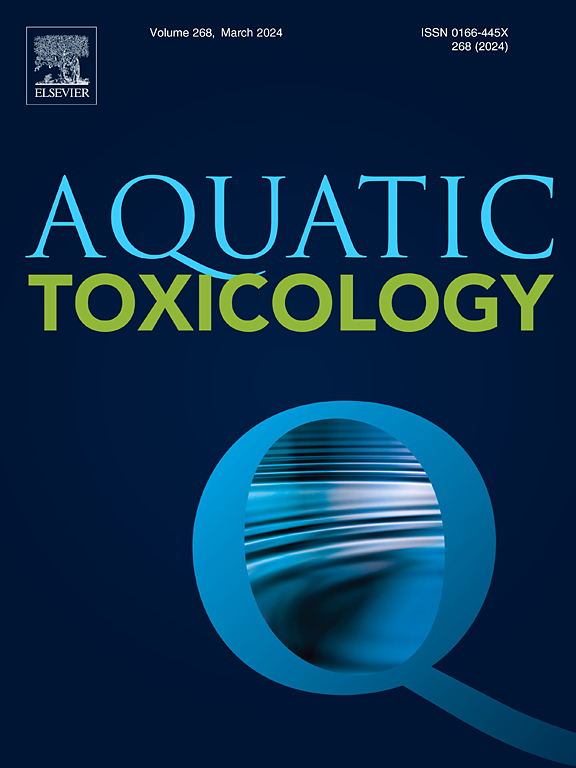Effect of acidification on the chronic toxicity of diclofenac to Daphnia magna
IF 4.3
2区 环境科学与生态学
Q1 MARINE & FRESHWATER BIOLOGY
引用次数: 0
Abstract
Pharmaceuticals, as ionizable compounds, are a challenging group of pollutants to analyze because the pH of the environment can alter its ecotoxicological features. However, changes in the toxicity of pharmaceuticals toward aquatic organisms were observed even when there was no change in the ionization of the molecules with a pH shift. Therefore, we conducted a study that aimed to check how pH influences the chronic toxicity of diclofenac (DCF, pKa ≈ 4.0) toward Daphnia magna at two pH levels, 7.0 and 8.7, where DCF is obtained as relatively polar anion. The performance of the experiment with OECD 211 was found to be challenging because of the medium pH shift during the exposure test. Acidification increased the toxicity of DCF, reducing the number of neonates (at a concentration of 1.3 mg l-1) and showing a tendency towards delayed hatching and reduced number of hatchings. In addition, the acidification itself also changes D. magna reproduction, affecting the number of hatchings and the first day of hatching. We conclude that the pH, as a factor of toxicity modulation for ionizable compounds, needs to be evaluated and presented in scientific protocols.
酸化对双氯芬酸对大水蚤慢性毒性的影响
药物,作为可电离化合物,是一组具有挑战性的污染物分析,因为环境的pH值可以改变其生态毒理学特征。然而,药物对水生生物的毒性变化被观察到,即使在分子的电离没有变化的情况下,pH值也发生了变化。因此,我们进行了一项研究,旨在检查pH值如何影响双氯芬酸(DCF, pKa≈4.0)在7.0和8.7两种pH水平下对大水蚤的慢性毒性,其中DCF以相对极性阴离子形式获得。由于在暴露试验期间介质pH值发生了变化,因此发现OECD 211的实验性能具有挑战性。酸化增加了DCF的毒性,减少了新生儿的数量(浓度为1.3 mg l-1),并呈现出延迟孵化和减少孵化数量的趋势。此外,酸化本身也改变了马格纳的繁殖,影响了孵化的数量和孵化的第一天。我们的结论是,pH值作为可电离化合物毒性调节的一个因素,需要在科学方案中进行评估和提出。
本文章由计算机程序翻译,如有差异,请以英文原文为准。
求助全文
约1分钟内获得全文
求助全文
来源期刊

Aquatic Toxicology
环境科学-毒理学
CiteScore
7.10
自引率
4.40%
发文量
250
审稿时长
56 days
期刊介绍:
Aquatic Toxicology publishes significant contributions that increase the understanding of the impact of harmful substances (including natural and synthetic chemicals) on aquatic organisms and ecosystems.
Aquatic Toxicology considers both laboratory and field studies with a focus on marine/ freshwater environments. We strive to attract high quality original scientific papers, critical reviews and expert opinion papers in the following areas: Effects of harmful substances on molecular, cellular, sub-organismal, organismal, population, community, and ecosystem level; Toxic Mechanisms; Genetic disturbances, transgenerational effects, behavioral and adaptive responses; Impacts of harmful substances on structure, function of and services provided by aquatic ecosystems; Mixture toxicity assessment; Statistical approaches to predict exposure to and hazards of contaminants
The journal also considers manuscripts in other areas, such as the development of innovative concepts, approaches, and methodologies, which promote the wider application of toxicological datasets to the protection of aquatic environments and inform ecological risk assessments and decision making by relevant authorities.
 求助内容:
求助内容: 应助结果提醒方式:
应助结果提醒方式:


